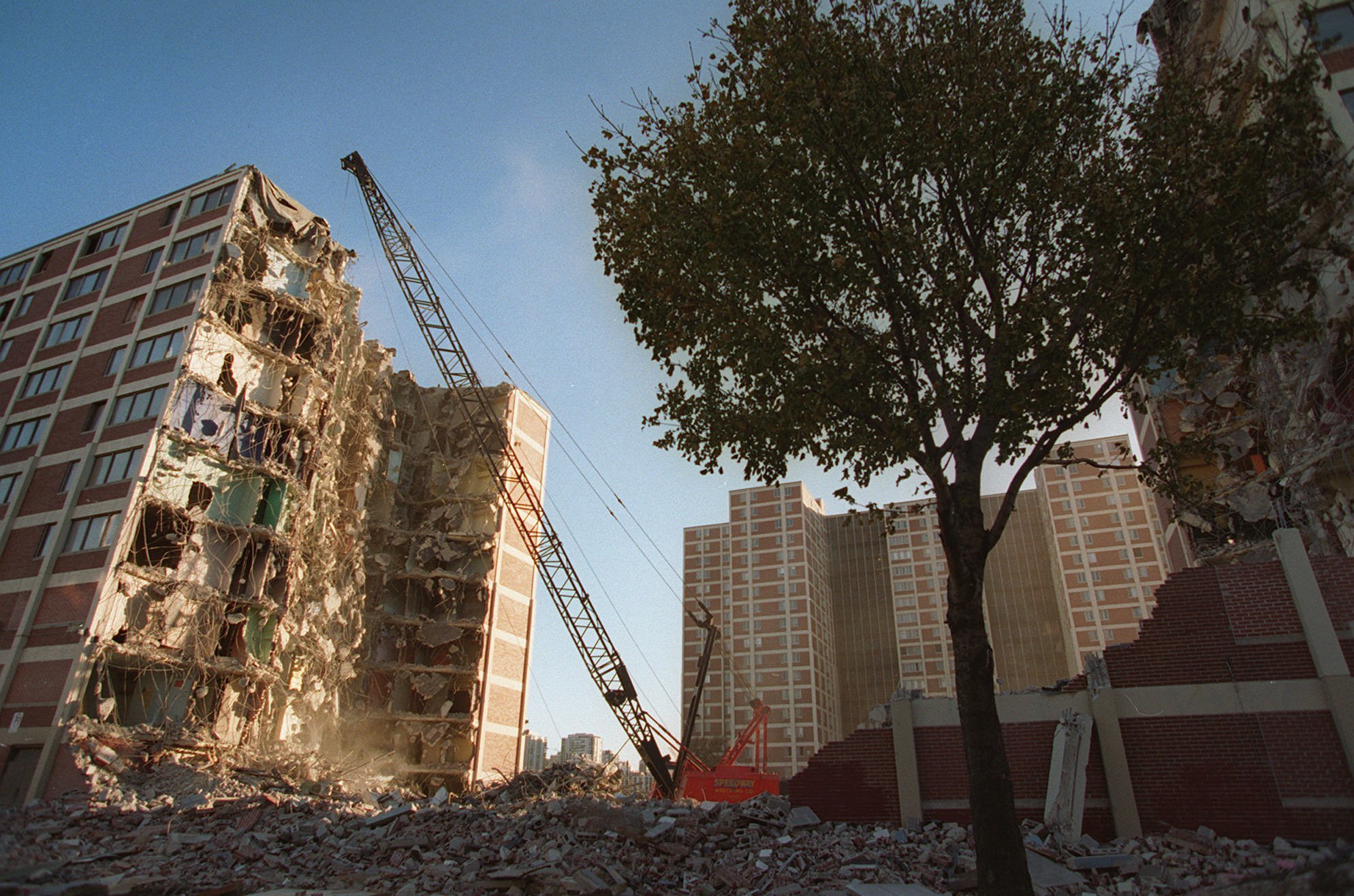What Cabrini-Green Can Teach Us About Public Housing
Ten years ago, the last of the Cabrini-Green towers were torn down. Author Ben Austen joined Reset to revisit the public housing project’s legacy.
By Meha Ahmad, Justine Tobiasz

What Cabrini-Green Can Teach Us About Public Housing
Ten years ago, the last of the Cabrini-Green towers were torn down. Author Ben Austen joined Reset to revisit the public housing project’s legacy.
By Meha Ahmad, Justine TobiaszDemolition crews knocked down the last Cabrini-Green public housing tower on March 30, 2011. And while smaller row houses still exist, the last tower falling was a potent symbol for the site, which once housed more than 15,000 Chicagoans.
But the red and white high-rises on the Near North Side didn’t come down without a fight. Residents, community activists and local politicians pushed back against the city’s plans to redevelop the land and displace many of the low-income families who lived there.
“People formed their lives there. … The infamy part, only the sense of crime and degradation, is really missing a lot,” said Ben Austen, author of High-Risers, Cabrini-Green And The Fate Of American Public Housing.
Reset spoke with Austen on Tuesday about Cabrini’s legacy and the current state of public housing in Chicago.
Here are edited highlights from the conversation.
On Cabrini-Green’s complicated history
Austen: Part of Cabrini-Green being thought of as so infamous and notorious has to do in a lot of ways with its location on the North Side. In our city, which is so hyper-segregated, where North and South are still kind of like code words for Black and white, there was this large Black population on the North Side and it got reported on all the time in that way. It was almost like on the one hand, Good Times, or on the other hand, Candyman. You want to hear about how there was community there, we knew everybody, we were like family or you want to hear about the dead body on the elevator. A really difficult thing that we deal with is that both could exist. There was violence, and there was also this deep sense of community.
On the significance of the last high-rise coming down
Austen: It felt like the end of something really big. There were up to almost 20,000 people there, where did they all go? This was their home. It also felt like an end of this sort of mythological place that we sort of thought about as bigger than a real thing. So what did that mean? And the city was embarking on this wild urban renewal project, the Plan for Transformation, you know, how was that going? It wasn’t just public housing. It was like our entire history was in it — politics and race and migration and architecture, it seemed to tell all those stories.


On the displacement of families
Austen: It took until 2011 for Cabrini-Green’s last of 23 towers to be torn down, and residents actually sued to stay there. There’s a bit of irony that the most notorious public housing development on the most prime real estate was able to be the last one. And that was really the work of residents who were like, “You know, if you move us, let’s try to make this fair.”
Many of the residents were moved out with Section 8 vouchers, an idea that you have mobility and you could go anywhere with this government assistance. But the truth is that landlords wouldn’t rent to people coming from public housing or you couldn’t afford elsewhere. So most people moved to neighborhoods on the South Side and the West Side. And we also saw different kinds of outmigration from the city to places like the south suburbs.
On the current state of affordable housing in Chicago
Austen: We have this incredible shortage of affordable housing. Families that we just don’t have apartments for them. We don’t have units for them. So I guess some of the lessons [from Cabrini-Green] are how the need has not disappeared. In a way, public housing is one [solution], but it also could be a kind of distraction because it was so vilified and so demonized and so wrapped up with race and pathologizing Black poverty. So we [still] can do something bold.

This interview has been edited for brevity and clarity. Press “Listen” to hear the full conversation.
Meha Ahmad is a producer for WBEZ’s Reset. Follow her @meha. Justine Tobiasz is WBEZ’s media archivist. Follow her @jutobzz.
